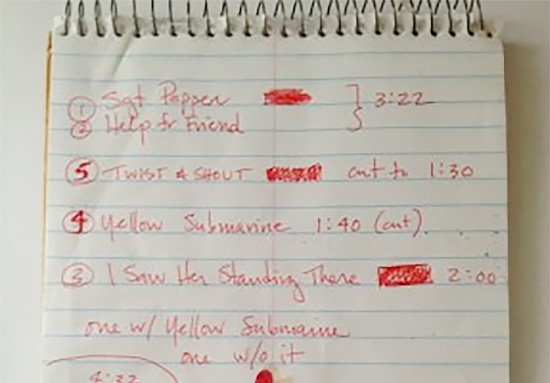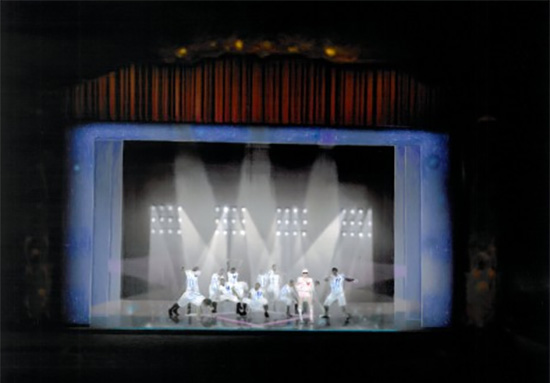Category: Summer 2014
Big Night on Broadway
By Lara Ehrlich and Laurel Homer
CFA alums topped the Tony Awards on June 8, 2014, at Radio City Music Hall when Stewart F. Lane (’73) and Sue Wagner (’97) received trophies for Best Musical for A Gentleman’s Guide to Love & Murder, which they co-produced. The musical comedy—in which one actor, Jefferson Mays, played eight heirs vying for the family fortune—was the evening’s most celebrated show, with 10 nominations and 4 wins. Broadway’s biggest night marked milestones for both alums: it was Lane’s sixth Tony Award; Wagner also took home a Tony (her third) for Best Revival for A Raisin in the Sun.

Stewart F. Lane and his wife (and co-producer), Bonnie Comley, received a Tony Award for Best Musical for A Gentleman’s Guide to Love & Murder (above). Co-producer Sue Wagner celebrates her two Tony Awards (for Gentleman’s and A Raisin in the Sun) with husband Rick Plaugher (’97) (below). Photos by Rob Rich
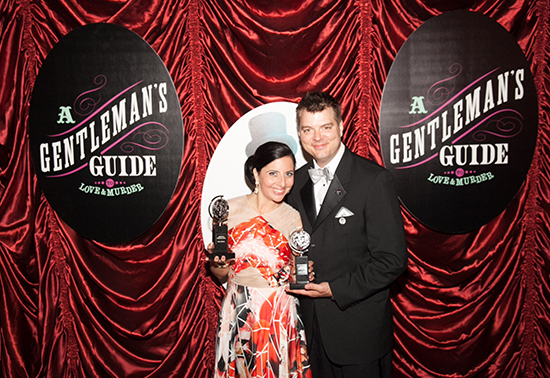
In Memoriam
By Lara Ehrlich | Photo by Jon Imber

“Life, in Imber’s paintings, unfurls with wayward force, like a thick, flicked rope,” Boston Globe critic Sebastian Smee wrote of the master painter's work. "Self-Portrait" by Jon Imber
In his early work, New England painter Jon Imber (’77) created “hulking, volumetric figures with tiny strokes,” says Cate McQuaid of the Boston Globe. “They were a strange, striking blend of Romanesque art and...blocky, cartoonish figures...all executed with brushy, fastidious mark-making akin to Van Gogh’s.”
He moved from figures to abstract landscapes inspired by the summers he spent in Maine—and then to works characterized by expressive brushstrokes when he was diagnosed with amyotrophic lateral sclerosis (ALS), also known as Lou Gehrig’s Disease, which took the use of his painting hand first. As the disease progressed, he lost use of both hands and could no longer stand—but continued to paint using brushes and a dowel attached to a headset.
Imber died on April 17, 2014, leaving a legacy of work held in collections including the Fogg Art Museum at Harvard and the Museum of Fine Arts, Boston. He taught at Harvard for 27 years and helped found an artists’ co-op, Mix-It Studios, in Somerville, Massachusetts. In 1999, BU hosted Imber’s mid-career retrospective.
“Life, in Imber’s paintings, unfurls with wayward force, like a thick, flicked rope,” Boston Globe critic Sebastian Smee wrote in his review of Imber’s 2013 career survey at Queens College in New York. “It takes on vital cadences. It laughs at itself, too.”
Watch a clip from the film Jon Imber’s Left Hand, which traces the artist's determination to continue painting as his condition progressed, here.
About
Esprit is a publication for alumni and friends of the Boston University College of Fine Arts. We welcome your feedback on the magazine, this website, or anything else related to CFA. Send us your comments at cfaalum@bu.edu.
Dean
Benjamín E. Juárez
Assistant Dean, Development & Alumni Relations
Stephanie Trodello (COM’94, CAS’94, GSM’01)
Director of Communications
Laurel Homer (CAS’98)
Editor
Lara Ehrlich (UNI’03)
Art Director
Stephanie Paul Testa (’04)
Contributing Writers
Suki Casanave
Rachel Johnson (MET’11)
Amy Laskowski
Julie Rattey
Susan Seligson
Andrew Thurston
Published by Boston University College of Fine Arts
Produced by Boston University Marketing & Communications
Artist at Work
A music video with a twist
By Lara Ehrlich | Photo by Mara Casey
“I was elated and devastated all at once,” the band Father Tiger croons in its song “First Love.” Film director Michael Medico (’94) puts a story to the angsty lyrics in a music video with a twist: A little boy falls for a little girl and woos her as they grow up; though they become best friends, their relationship never blossoms into romance. At the end of the video, we learn why. Take a look:
“The ‘First Love’ lyrics had a nostalgic quality, and I wanted to capture the brazenness of youth,” says Michael Medico (’94), who directed this music video for the band Father Tiger. Video by Michael Medico
Father Tiger released “First Love” in June 2013, the day before the Supreme Court rulings ended the Defense of Marriage Act and Proposition 8, and the band has donated a portion of its iTunes proceeds to the fight for marriage equality. Esprit goes behind the scenes with Medico to talk about the making of the video.
How did you and Father Tiger meet?
I liked Father Tiger on Facebook when I saw them singing Adele’s “Set Fire to the Rain,” and I liked their easy, upbeat sound. I met the lead singer, Greg Delson, after one of the band’s gigs, and we became friends. Their videos had a great visual style, but they were missing a story—so I told Greg I wanted to take a crack at directing a video for them.

Medico shot the whole video in one day. “We didn’t have time to move to a second location,” he says. So, “necessity became the mother of invention!” Photo by Mara Casey
Did Father Tiger write the song with a specific relationship in mind, or did you come up with the video’s twist ending?
I didn’t talk to Greg about what he had envisioned before pitching my video treatment. As I listened to the song, the whole story just unfolded in my imagination. The lyrics that most intrigued me were “I was elated and devastated all at once,” and I began to think about the different ways one could fall head over heels in love, and the reasons that love sometimes doesn’t work out. Since the video was released, I’ve heard a lot of talk about the wedding; as much as I’m an outspoken supporter of marriage equality that was not the focus for me. The video is about the love of two lifelong friends. The wedding twist is crucial to this story because it allows the audience a newfound understanding of that central relationship.
What inspired the story that unfolds in the music video?
My best friend from BU, Leslie, and I have always been kinda sorta in love. Like most people in love, we’ve had our highs and our knock-down-drag-out lows. Plus, as actors we knew a thing or two about passion and drama. So, you may ask, if we’ve been so in love, why aren’t we married? Simply, we’ve never been sexually compatible.
When I married my (now ex) husband, everyone placed bets that I would not make it through the ceremony without crying. Well, I didn’t cry during the vows, or the kiss, or the walk back down the aisle, but after the best (wo)man’s toast, Leslie and I bawled our eyes out. It felt like the end of “us.” Not “us” as friends, of course, but “us” as a couple, because we were in essence life partners. (Just for the record, Leslie married the most wonderful guy and she has two incredible kids.)
Love is strange. There’s no rhyme or reason. There’s no formula. We can’t choose who our heart skips a beat for. Just like I didn’t choose to be attracted to men, I also didn’t choose to fall in love with Leslie. It’s just what happened. I wanted to capture that love on screen.
You had fewer than three minutes to tell this story, from the characters’ first meeting as babies to the wedding day. How did you decide which moments of the friendship to highlight?
When I first listen to a song (or read a script), I pay close attention to the immediate ideas and images that run through my mind. I write down my first impressions before my brain suppresses my natural instincts. The “First Love” lyrics had a nostalgic quality, and I wanted to capture the brazenness of youth.
The scenes for “First Love” played out in my head during that first listen almost exactly as you see them in the video. The only major difference is that I had originally planned for the scene where the boy gives the girl a love note to take place in a classroom. Since we were shooting the whole video in one day (the babies, nine-year-olds, teens, wedding, and band footage!), we didn’t have time to move to a second location or the production design budget to turn one of the rooms in our location into a legit-looking classroom. Necessity became the mother of invention!

A seasoned nonprofit organizer, Medico pulled together 50 volunteers for the video. Photo by Mara Casey
You are no stranger to organizing huge nonprofit efforts, like the Hot in Hollywood benefit. How did you solicit the more than 50 volunteers who donated their time and services to this video?
First, I should say that Greg was paying for the music video himself, so I didn’t want to break the bank. We budgeted about $3,000 for the whole shoot. It’s pretty challenging to pull off this size of production for that little money, so I needed reinforcements. When I was doing Hot in Hollywood, I met a ton of super-talented people with big hearts, and many of them have become my closest friends here in Los Angeles. I put out the Bat Signal, and everyone responded to the video’s story.
I needed a lush garden for the wedding scene, plus seven other locations all in the same house. A Hot in Hollywood board member has a home that was the perfect location for the video. I pitched the idea to her, and she loved it. She was so sweet to let us shoot there and it was her idea to donate her location fee to the Gay and Lesbian Center of Los Angeles.
What inspired the band to donate a portion of the song’s iTunes proceeds to the fight for marriage equality?
The song came out one day before the fall of DOMA and the repeal of Prop 8, so marriage equality was on the forefront of everyone’s mind. The story is a celebration of love in all forms, and the band and I believe that marriage between two people in love should be an equal right of all Americans.
Share Your #cfanotes
We invited you to take Esprit behind the scenes of your works in progress, and you rose to the challenge.
You shared your sketchbooks, costume designs, business plans, installation models, and more on CFA’s social media pages. Here are just a few of our favorites so far.
#cfanotes
Join the fun! Share a photo of your work in progress on Facebook, Twitter, and Instagram using the hashtag #cfanotes.
Master Class
By Rachel Johnson | Photo by Oshin Gregorian
“I fell into the world of opera,” says David Kneuss (’70), executive stage director of New York’s Metropolitan Opera. Although he began his professional life as an actor, the School of Theatre graduate quickly moved into directing, staging hundreds of operas around the world during his 35-year career. In 2012-2013, he returned to CFA for two residencies in the Opera Institute.
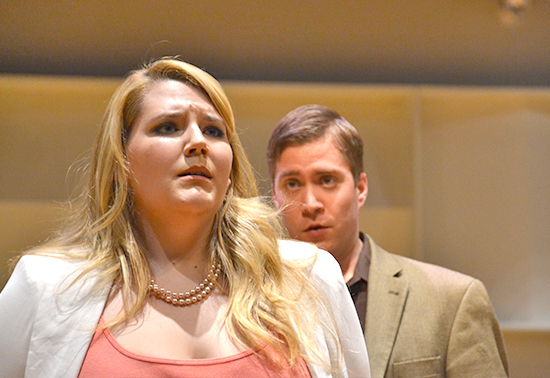
David Kneuss (’70) staged the first two acts of the Marriage of Figaro with tag-team casts. Photo by Oshin Gregorian
What was your favorite residency moment?
We staged the first two acts of the Marriage of Figaro with tag-team casts—starting with one group of singers and then trading off to another—so I was able to work with a number of students. One of our Counts was a wonderful bass baritone, and in the second act, he switched to playing Antonio, the drunk gardener. This student was very refined and careful. The day of the performance, I told him to come in with a mouthful of crackers and blurt out his lines. He walked onstage and opened his mouth, and crackers flew all over the place. Nobody was expecting it—and it was perfect. I need to be just a little outrageous with these students to get them out of their comfort zones.
You regularly stage operas in Japan. How are Japanese and US audiences different?
Japanese audiences are very polite. They don’t applaud until the end, when they go completely crazy. They’re very serious and knowledgeable about opera, and they almost never go to see an opera for the first time without having listened to it first. It’s quite thrilling.
Does education help audiences appreciate opera?
You could go to an elementary school in Japan, and every kid is playing the violin. Japan figured out that learning music helps you learn other things. And I think it becomes very obvious when you compare their tremendous emphasis on musical education to the deterioration of music education in this country.
“In this social media world, things have to be instantaneous. There’s nothing instantaneous about opera...I think once we get an audience in the seats, though, they’re usually pretty happy with the show.”—David Kneuss
How has opera changed in the last 35 years?
It’s harder to get an audience now. When I first came to the Met, we never had to buy ads and the opera was still 97 percent sold-out every night. Now we spend a lot of money on publicity and we struggle to fill the seats. They say it’s because the graying population of opera-goers is dying off. But you know, there are always more people getting gray; it’s just that priorities change. I think they change because there’s not much music education in schools, and in this social media world, things have to be instantaneous. There’s nothing instantaneous about opera. It takes an attention span that people don’t seem to have as much anymore. I think once we get an audience in the seats, though, they’re usually pretty happy with the show.
Was there a moment with opera when you thought, “This is why I wanted to do this”?
The first production I worked on was a live telecast of Tosca, with Luciano Pavarotti and Shirley Verrett. It was my first job as assistant director, the director left, I was suddenly in charge, and we were sending this television show out live to the world. I remember walking home afterward thinking I’d landed on the moon. I found out later that more people saw that telecast than had ever seen the opera before in history. That was a defining moment.
Art Shines at Night
By Rachel Johnson | Photo by Cydney Scott
For four nights in October 2013, a laser installation titled uboc No. 1 & stuVi2 connected Boston University’s Law Tower (dubbed the ugliest building on campus, or uboc) to the newest student residence (Student Village 2, or stuVi2). German artist Florian Dombois created the installation for nonprofit TransCultural Exchange’s Conference on International Opportunities in the Arts: Engaging Minds.
Dombois chose two buildings that were similar in size and shape, but separated by distance and time. The LAW building is one of the oldest towers on campus, and StuVi2 is the newest. The beam, which acted as a “dialogue” between the two buildings, also stretched across the BU Bridge. For the record, Dombois doesn’t think the Law Tower is the ugliest building on campus, but the name was too perfect to pass up.
Alums at the Oscars
By Amy Laskowski | Photo courtesy of the Walt Disney Company
Two alums walked the red carpet at the 86th Academy Awards this year: Alfre Woodard (’74, Hon.’04) starred as Mistress Shaw in 12 Years a Slave, which won the Oscar for Best Picture, and Peter Del Vecho (’80), producer of Frozen, took home a golden statue for Best Animated Feature Film. The 3-D Disney hit also won Best Original Song for “Let It Go.” Based on Hans Christian Andersen’s fairy tale The Snow Queen, Frozen's storyline is a departure from the classic Disney formula of evil queen, distressed princess, heroic prince. Del Vecho led the box office smash's transformation from a traditional tale to a quirky, touching story based on the relationship between two sisters.
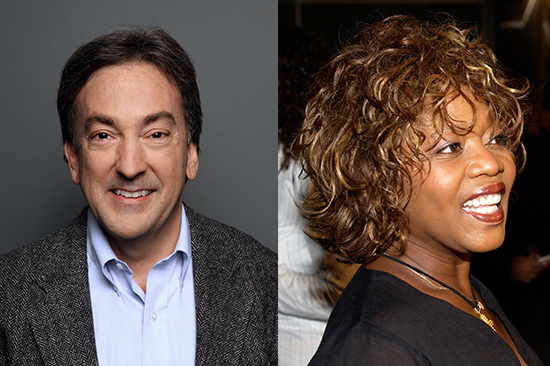
Producer Peter Del Vecho’s film Frozen and actress Alfre Woodard’s film 12 Years a Slave won Oscars at the 86th Academy Awards this year. Photos courtesy of the Walt Disney Company and @iStock/Ed Stock
School of Music Gives Rhythm to Boston Symphony
The percussion section of the Boston Symphony Orchestra (BSO) is also the BU division. Three percussion alums—Dan Bauch (’04), Kyle Brightwell (’12), and Matthew McKay (’11)—are members of the section, under the leadership of BSO Principal Timpanist and CFA Lecturer Tim Genis. “Our percussion department is widely known for having an exceptional work ethic and for its tradition of excellence,” says Richard Cornell, School of Music director ad interim. “The long history of deep connection to the Boston Symphony has been essential to our program.” BU’s commitment to excellence in percussion was highlighted recently with the opening of the Judith R. Harris Center for Music Teaching & Learning on CFA’s ground floor, which features a suite dedicated to percussion teaching and practice.—Rachel Johnson
CFA Trends on Twitter
By Lara Ehrlich | Photo by iStock/Ed Stock
Ginnifer Goodwin (’01)—Snow White on the hit ABC show Once Upon a Time—tweeted the celebratory message:
“So proud to have my alma mater @BU_Tweets named as one of @backstage’s Tried-&-True Acting Colleges! Go Terriers!”
In an article naming Boston University one of the “5 Tried-and-True Acting Colleges” in the United States, the renowned performing arts magazine Backstage commended the University for pushing “actors to be part of a play as well as understand the role their play takes on in a larger discussion.” Backstage lauded School of Theatre Director Jim Petosa’s philosophy that theater is “a force for understanding aspects of humanity, whether at the geopolitical level or at the local level. We’re not bound to one style or method, but we do tend to stress plays that really have an impact on our understanding of societal phenomenon.”
BU is in the company of Carnegie Mellon University; Rutgers University; the University of California, Los Angeles; and the Tisch School of the Arts, New York University.




















